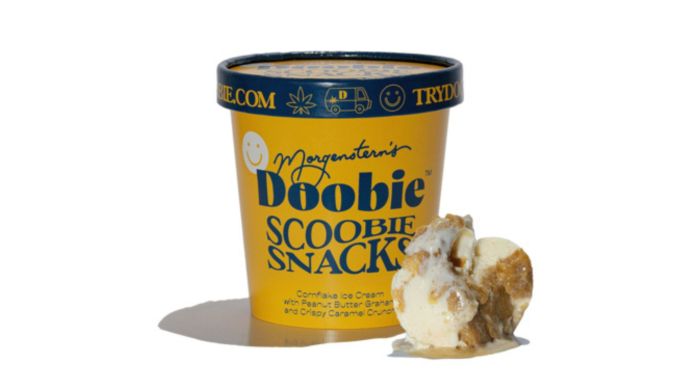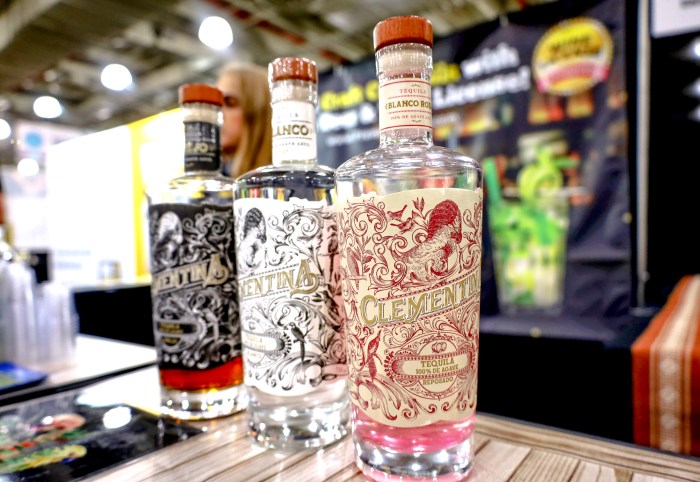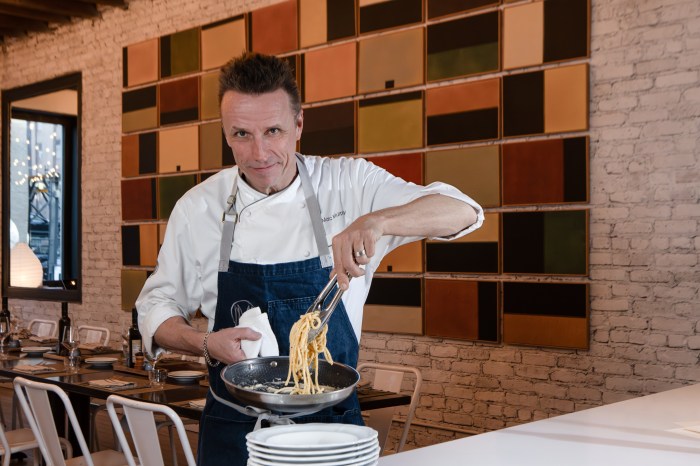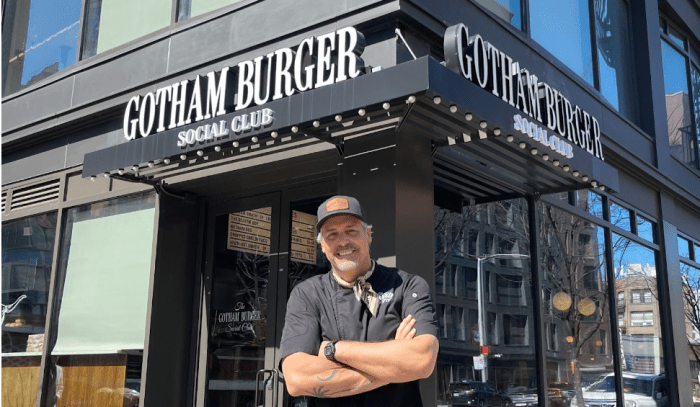
Most cultures have some kind of crispy, melty combination of bread and cheese: for Italy, it’s pizza; for the United Kingdom, it’s the toastie; for Brazil, it’s pao de queijo. And for the lesser-known “Balkans,” it’s the burek. Reminiscent of Greek spanakopita, burek is a flaky, layered phyllo dough pie that can be filled with the likes of cheese, beef, spinach, potato or apple.
And of course, if there’s one place outside of the region you can try burek, as well as a slew of other Balkan dishes, it’s New York City.
But first, a little background. The “Balkans” constitutes the most eastern of Europe’s three southern peninsulas. This includes: Albania, Bosnia and Herzegovina, Bulgaria, Croatia, Kosovo, North Macedonia, Montenegro, Romania, Serbia and Slovenia. Wars and political unrest over territories throughout the last century caused many refugees to relocate around the world, especially in the 1990s during the civil war. Some came to the United States and New York, resulting in a small community eager to share their culture and heritage — and what better way than through food?

Rooted in family tradition
Djerdan Burek, with locations in Astoria, Brooklyn and a factory in New Jersey, was started more than 20 years ago by Esma and Hamo Medunjanin, refugees from Bosnia. It was a true mom-and-pop shop then, according to daughter Selma Medunjanin-Ismajli, who took over the business with her two siblings when their parents retired.
Back in the late 1990s her mother was making burek pies at home in their one-bedroom apartment and selling them to a local Balkan restaurant, and her father saw an opportunity. They rented a building on 34th St. and 31st Ave. in Astoria — where the restaurant is still located — and her mother worked the kitchen while her father worked the floor.
“At this time many Bosnian refugees had settled in Astoria and not much was available to them,” Medunjanin-Ismajli explained. “We were one of the first Balkan restaurants to start up in the area. It was a very simple mom-and-pop restaurant with homemade food and friendly familiar service. To this day we try to operate and maintain the same principles and service.”
Since then they’ve been able to open a sister restaurant in Brooklyn and also a factory in New Jersey, which allows them to produce burek in larger quantities (you can even order boxes of it to cook at home).
Vladimir Ocokoljic, owner of Kafana NYC in the East Village, came to the United States from Belgrade, Serbia, 29 years ago. Kafana serves authentic Serbian “comfort food,” as he calls it.
“I thought, in New York every cuisine is represented here, so why not mine?” he said about starting the restaurant 11 years ago. “I’ve just been passionate and lucky enough that it has worked.”
And at Çka Ka Qëllu in the Bronx, which opened a little over a year ago, the cultures of Albania and Kosovo are reflected in the food as well as decor. Owner Ramiz Kukaj was inspired by Balkan architecture from the 1400s and 1500s, and sourced historic items directly from his home country.
A 20-year-old carpet lies on the floor from wartime — burn marks from fire are visible. Food is served on dishes made of wood that he collected over 10 years, and other artifacts like tools line shelves on the walls.

He wanted to evoke the region’s medieval history and keep “culture and history alive” for his son, who asked about Albania when he was younger. His friends would take him to restaurants that represented their own cultures, but he didn’t have an Albanian option. So, his father decided to create one for him.
“When you walk in here, you see my spirit. You see our culture,” he said.
The cuisine itself
“Balkan food is very much part of Mediterranean cuisine or even a variation of Turkish cuisine,” Selma said. “It’s a diet that is mostly composed of various grilled meat dishes such as beef kebabs (cevapi), ethnic dishes such as stuffed cabbage (sarma) and the staple dish, the phyllo dough pie (burek).”
With food that is rooted in tradition, restaurant menus come from family recipes. At Djerdan, most recipes are from mother Esma, which she learned from her mother, grandmother and other family members. Medunjanin-Ismajli’s grandfather (Esma’s father) also owned a pastry shop in their home country, so some of the traditional pastries like tulumba (a traditional fried dough dipped in sweet syrup) and shampita (“sweet egg whites whipped to perfection on a thin yellow cake crust”) are his recipes.
“Cooking at home from scratch was just a way of living as long as I can remember,” she said.
Ocokoljic also focused on traditional recipes at Kafana, which he describes as “simple food” and “not too fancy.”
“We use the best ingredients but don’t abuse them,” he said. “In the Balkans, we’re poorer people so the food needs to fill you up. It’s just in the culture that it’s heavier food … it needs to last.”
Kukaj used family recipes at Çka Ka Qëllu too, trying to bring authentic Albanian food to an area where there weren’t any other restaurants when he first began his concept. It is known for its salads (like the Tradita Salad with cherry tomatoes, red onions, olives, cucumber, carrots, feta cheese in olive oil and vinegar, or the Çobani Salad with scallions, red onions, tomatoes, cucumber, green olives and feta cheese), and its bread — which is homemade at the restaurant each day.
“If I was going to do it, I wanted to do it right,” he said about creating the space and menu. “When you walk in, we’re very friendly too. We just want to show who we are and present our culture to you.”
What to order
If the menus are a little overwhelming, have no fear. The owners gave us their top choices for ordering if you’re new to Balkan food.
Ocokoljic attests that Kafana’s menu is already curated for the “best of” Serbian food, but says the Mixed Grill is a good intro option because you can taste five different things at the same time, including: cevapi, kobasice (sausage), dimljena vešalica (thin sliced smoked pork neck), rolovane uve šljive i dzigerica (prunes stuffed with walnuts and cheese, with chicken liver rolled in bacon) and krmenadla (pork chop). If you’re a vegetarian, he recommends prebranac (traditional baked beans) or one of the cheese or spinach pies (gibanica and zeljanica, respectively).

Another combo plate is recommended at Çka Ka Qëllu, which offers lamb, veal, chicken and shish qebap.
At Cevabdzinica Sarajevo, another Bosnian eatery in Astoria, try the take on cevapi and burek along with the sarma (stuffed cabbage with minced beef and rice) and pljeskavica (a Bosnian “burger patty”). The fast casual restaurant opened in 1976 and is named after the capital of Bosnia and Herzegovina.
And of course, Medunjanin-Ismajli says that burek is a must at Djerdan. “If you are coming for lunch, a slice of this ($6 each) with a homemade yogurt will keep you filled for a good part of the day.”
If stopping by for dinner, she says to share a slice of burek and try cevapi served in a pita with ajvar (red pepper sauce) and chopped onions, or some stew dishes such as punjena paprika (stuffed pepper) or beef goulash, which are all made from scratch daily.
“Also try to leave room for dessert,” she said. “All of our desserts are made fresh on a daily basis from scratch and are absolutely divine.”

















